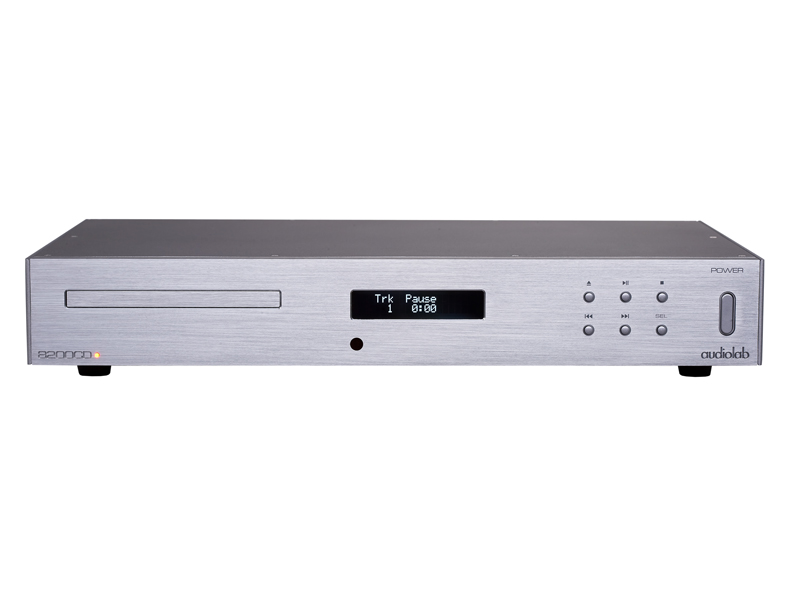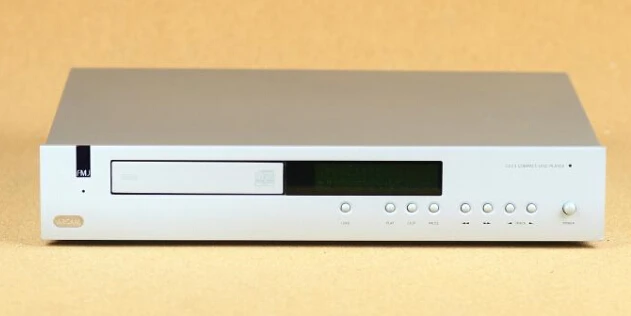In 2012, we got another amazing digital product from the man who gave us the gigantic Pink Triangle Da Capo DAC in 1993 and the superb cheap Cambridge Audio CD4SE Compact Disc player a few years later. The International Audio Group manufactures Audiolab’s 8200CD CD spinner, which was invented by British electronics genius John Westlake.
The player was one of just a few to employ the 32-bit American ESS Technology Sabre DAC when it was released, a device that came out in the latter part of the last decade but hasn’t seen much use in consumer goods due to its high cost. The Sabre is a sophisticated package, featuring 256 separate DACs per channel on the chip to improve inherent conversion resolution while lowering static conversion mistakes. Because of the conversion procedure, each of the 512 DAC elements runs at 84.672MHz, which is 3,840 times faster than the average audio upper bandwidth of 22kHz, keeping digital noise away from the human ear. Depending on the input sample rate, the Sabre operates in integer oversampling or upsampling mode, according to Naim’s DAC. For internal processing, all digital word lengths are expanded to 32 bits, and it can take up to 24/96 in DAC mode.
The 8200CD, like many other machines of its generation, has user-selectable digital filters that allow the user to fine-tune the performance to their liking, although there are more of them than most. Optimal Time Domain NOS (best for audio, slow in-band roll-off), Optimal Time Domain ZS (best for audio, no in-band roll-off), Optimal Frequency Domain (Measurement Mode filter), Standard Fast roll-off, and Standard Slow roll-off are among them. In addition to the factory-installed filters, the 8200CD supports user-upgradeable digital filters via USB download for long-term planning.
John Westlake struggled with jitter reduction as well, using a customized high-performance discrete master clock. While the unique sample rate converter achieves 100% jitter reduction in the digital domain, external ‘analogue domain’ caused aberrations such as RF breakthrough and PSU coupling have an impact on the DAC’s ultimate acoustic performance. As a result, Audiolab created the Cascaded Asynchronous Time Domain Attenuator circuit to protect the DAC substrate from the potentially damaging analogue domain of non-synchronous digital input data. There were three similar cascaded stages used, with each stage giving improved isolation. The 8200CD also includes an asynchronous USB mode, which effectively synchronizes the computer’s internal clock with the DAC.
The analogue output stage received special attention, with balanced analogue XLR outputs connected directly to a pair of Audiolab FET-based Class A stage buffers per channel. This resulted in a significant increase in RF IMD rejection and no detectable RF rectification, resulting in a smoother sound. There are no AC coupling capacitors in the unit because it is totally DC-coupled. In the signal route, high-tolerance polypropylene film/foil capacitors and unique surface-mount resistors are employed, and the player contains thirty-four regulated supplies, fourteen of which are ultra-low-noise discrete designs with LC filtering for maximum interstage and RF isolation. The bulk storage capacitance employed is over 250,00uF, and each portion of the player is independently regulated.
In some ways, the result is a fantastic-sounding £800 CD player that rivals several that cost twice as much. It’s not the sweetest, silkiest, or most seductive silver disc spinner; others have done and continue to do a better job of conjuring up a euphonic tonality that compliments the discs they play. The Audiolab, on the other hand, provides a stunningly spacious, cathedral-like soundstage with pin-point picture positioning that feels like it’s been set in stone. It’s also capable of producing music in a way that isn’t generally connected with digital — it faithfully reproduces rhythms when standard CD players would rather not try. Its sound is more Naim than Audiolab in this regard!
When you combine stunning levels of detail resolution with the ability to drill straight into the mix, the Audiolab 8200CD is one of the best Compact Disc-playing values of the decade. Only a small lack of deep bass extension and grip, combined with blatant dynamics, puts it behind devices costing tens of thousands of pounds. That’s how good it is.
In my early twenties, I designed the Pink Triangle DaCapo, which was one of my first commercial DAC creations. It was a discrete DAC with two DAC elements each channel, for a total of four DAC elements in a Stereo DAC. With 1024 DAC elements for a Stereo DAC – that’s 512 DAC elements each channel – the ESS DAC used in the Audiolab goes even further. A genuine voltage output node is produced by both the DaCapo and the ESS DACs. This direct voltage output allows us to filter RF products (without active electronics) produced during the digital to analogue conversion process before they might induce potential RF related intermodulation distortion products in the analogue output stages’ very sensitive front-end circuits.
We use JFETs at the front-end of our Class A analogue stages, which give significant immunity to RF-demodulation, because simple passive filtering can only attenuate these RF products to a decreased level. One of the key reasons we believe traditional digital designs sound harsh and brilliant is RF leakage from the digital conversion process. The use of a JFET front end reduces SNR, but we believe the musical benefits exceed the technical compromises – sound quality above performance metrics.
We are the ones that created the filters. Dominik (the other half of the design team) is mostly in charge of the product’s software, though he’s also been incredibly helpful with the hardware. The Optimal Spectrum and, without a doubt, our favourite Optimal Transient filters are direct successors of our prior research and development on FPGA-based filter and modulator architectures. The Optimal Spectrum filter is a ‘perfect’ digital filter, at least in the frequency domain, in that it achieves full attenuation by FS/2 (half the sampling frequency), as required by the principles of sampling theory for ‘Aliasing free’ digital conversion. Unlike other digital filter designs, which only accomplish -6dB at FS/2 to maximize silicon area, this one achieves -6dB at FS/2 (i.e. reduce cost).
While the Optimal Spectrum filter performs almost flawlessly in the frequency domain, it introduces pre and post ringing in the time domain. The Optimal Transient types, on the other hand, might be thought of as the polar opposite of the ‘Perfect Frequency Domain’ filter, with zero pre or post ringing in exchange for lower frequency domain performance.
The Optimal Transient filters are available in three different variants — and this is where things get both intriguing and challenging! All three versions produce identical digital data — the final 1s and 0s are technically identical, but the calculations within the DAC are performed differently. Consider the following examples: 4+0 = 4, 0+4 = 4, 3+1 = 4, 1+3 = 4, 2+2 = 4; there are numerous methods to arrive at the same answer, but they all need distinct mathematical calculations. These calculations are performed on the DAC silicon itself, resulting in second-order effects such as internal PSU modulation, die level conversion clock modulation, and even direct RF modulation over the silicon die itself. What is the impact of these ‘second order effects’ on sound quality? The surprising solution can be found by listening to the first two permutations of the Optimal Transient filters (Optimal Transient and Optimal Transient XD).
The Optimal Transient DD filter is a bit of a wild card because it considers second-order effects and uses corrective processing to eliminate them – yet its time domain and frequency domain characteristics are identical to the first two variations. In that it provides reasonable frequency domain performance with no pre-ringing in the time domain, the Minimum Phase filter is a mix of the two primary Optimal types. The Fast and Slow filters are common digital filter kinds – they’re really given for comparison – and I don’t spend much time with them.
We are very proud of the design, which includes over thirty power supply rails, close to 250,000uF of supply decoupling, a discrete ultra low short-term phase noise (ultra low jitter) clock oscillator, discrete fully balanced Class A output stages, fully balanced analogue preamplifier signal path, and all active gain stages operating in Class A, as well as over 1,700 components.
Since the Hong Kong handover, when I basically just retired into my lab after the end of the party, only emerging out for the occasional food and sleep, I’ve been researching and developing DAC technology in deeper depth. The design was originally intended to be launched under our product brand (Dominik’s and my) before we started working with Audiolab, but a new brand is the last thing the hi-fi business needs right now. Audiolab has provided us with an excellent platform on which to present our designs.








